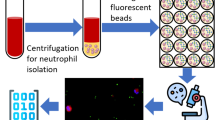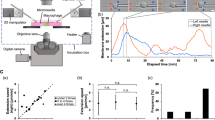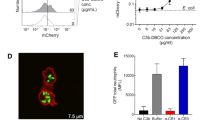Abstract
Phagocytosis by inflammatory cells is an essential step and a part of innate immunity for protection against foreign pathogens, microorganism or dead cells. Phagocytosis, endocytotic events sequel to binding particle ligands to the specific receptors on phagocyte cell surface such as Fcγ recptor (FcγR), complement receptor (CR), β-glucan receptor, and phosphatidylserine (PS) receptor, require actin assembly, pseudopod extension and phagosome closure. Rho GTPases (RhoA, Cdc42, and Rac1) are critically involved in these processes. Abrupt superoxide formation, called as oxidative burst, occurs through NADPH oxidase complex in leukocytes following phagocytosis. NADPH oxidase complex is composed of membrane proteins, p22(PHOX)and gp91(PHOX), and cytosolic proteins, p40(PHOX), p47(PHOX)and p67(PHOX). The cytosolic subunits and Rac-GTP are translocated to the membrane, forming complete NADPH oxidase complex with membrane part subunits. Binding of imunoglobulin G (IgG)- and complement-opsonized particles to FcγR and CR of leukocytes induces apoptosis of the cells, which may be due to oxidative burst and accompanying cytochrome c release and casapase-3 activation.
Similar content being viewed by others
Article PDF
Author information
Authors and Affiliations
Rights and permissions
This is an Open Access article distributed under the terms of the Creative Commons Attribution Non-Commercial License (http://creativecommons.org/licenses/by-nc/3.0/) which permits unrestricted non-commercial use, distribution, and reproduction in any medium, provided the original work is properly cited.
About this article
Cite this article
Park, JB. Phagocytosis induces superoxide formation and apoptosis in macrophages. Exp Mol Med 35, 325–335 (2003). https://doi.org/10.1038/emm.2003.44
Published:
Issue Date:
DOI: https://doi.org/10.1038/emm.2003.44
This article is cited by
-
Phagocytosis influences the intracellular survival of Mycobacterium smegmatis via the endoplasmic reticulum stress response
Cell & Bioscience (2018)
-
Bacillus amyloliquefaciens SC06 alleviates the oxidative stress of IPEC-1 via modulating Nrf2/Keap1 signaling pathway and decreasing ROS production
Applied Microbiology and Biotechnology (2017)
-
The many roles of NOX2 NADPH oxidase-derived ROS in immunity
Seminars in Immunopathology (2010)
-
Osteopontin modulates angiotensin II–induced inflammation, oxidative stress, and fibrosis of the kidney
Kidney International (2009)
-
Diabetes-induced alteration of F4/80+ macrophages: a study in mice with streptozotocin-induced diabetes for a long term
Journal of Molecular Medicine (2008)



